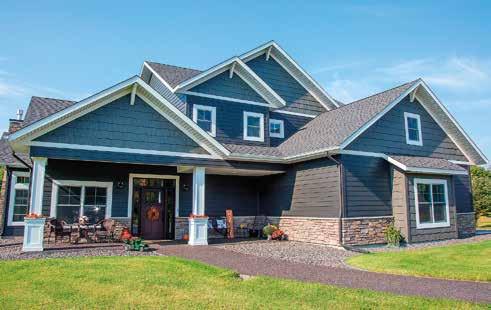
2 minute read
Key choices will determine proper homeowners' insurance

1. How much coverage?
Insuring your house for an incorrect amount can be a costly mistake. Over-insuring leads to unnecessary premiums being paid, while underinsuring can leave you with not enough money to rebuild your home. The three values of a home are market value — what someone is willing to pay to buy your house and the land it sits on, tax value — what the county determines your property to be worth, and replacement cost — the real cost to reconstruct your home from scratch after a total loss. Replacement cost does not consider which neighborhood, school district, or land / lakeshore value. Working closely with a local insurance agent or Realtor is the best way to ensure an accurate replacement cost.
2. What is covered?
The largest variances in homeowners’ insurance policies appear in the language that is used to define what is and what is not covered. For example, “named peril” policies provide a list of precisely what types of loss is covered. If damage occurs to your house that is not specifically listed on the policy, the insurance company will deny the claim. For this reason, “named peril” policies are often available at a lower premium because they pay fewer claims. In contrast, an “open perils” policy provides broad coverage for any kind of accidental direct physical loss, less a few exclusions — such as flooding or earth movement. The later policy provides much more comprehensive coverage to protect a home.
3. How is it covered?
Here again, difference in policy language is paramount. Some homeowners’ insurance policies pay claims on an actual cash value basis. Like car insurance, an actual cash value (ACV) policy pays the depreciated value of damaged property after a covered loss. If a 10-year-old sedan with an odometer reading of 175,000 battles a whitetail deer for lane position and loses, an insurer will pay the depreciated value of the car. When a homeowners policy with ACV coverage has a 15-year-old shingled roof that sustains hail damage, the policy will pay a depreciated loss settlement. In contrast, replacement cost coverage on a homeowners policy takes that same hail-damaged, old roof and pays the market rate cost to replace the roof with new shingles.
The fact of the matter is, not all homeowners insurance policies are created equal. And like most things, you don’t know what you don’t know. I’ve said it before, and I’ll say it again — and I’m sure to continue saying it — work closely with a qualified local agent to help you explore different coverage options. It’s the best way to ensure that you have a properly structured homeowners policy that will help you get back to where you were prior to a loss. D
Reid Strelow owns Reid Strelow State Farm Insurance and Financial Services, 2521 Miller Trunk Hwy., Duluth. He wrote this for The Woman Today, and the opinions expressed are his own.










